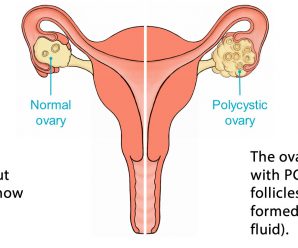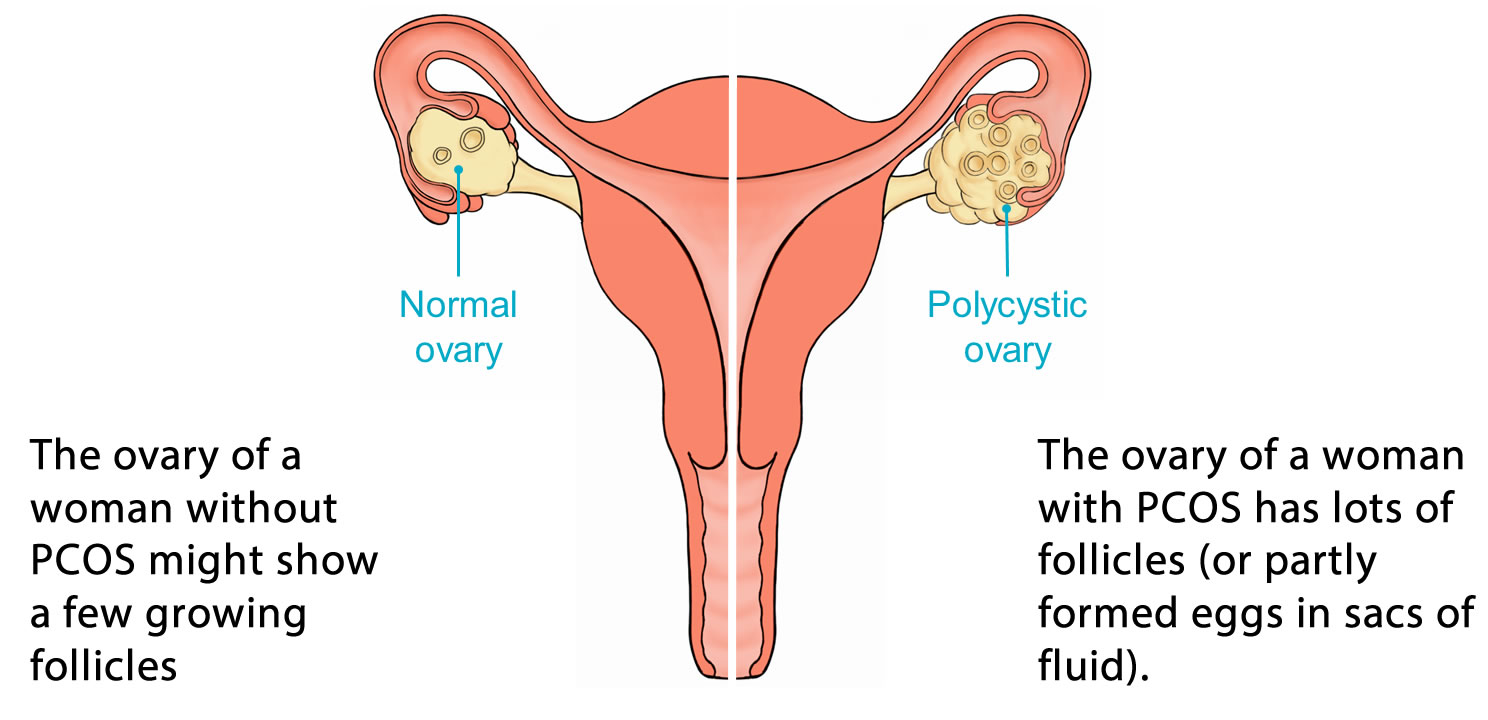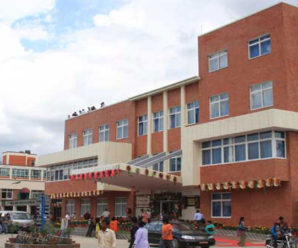Polycystic Ovarian Syndrome in women

According to American Society of Reproductive Medicine, PCOS is defined as having any two of the following signs and symptoms:
- Oligo-ovulation (irregular ovulation) or anovulation (complete lack of ovulation)
- Clinical or biochemical signs of high androgen (male hormone) levels
- Polycystic ovaries, which means many small cysts on the ovaries (normal ovaries have 5 or 6 follicles, whereas polycystic ovaries have 10 or more)
Imbalance in Luteinizing hormone (LH) and Follicular Stimulating Hormone (FSH) prevents the follicles in the ovary from developing properly. The follicles tend to remain small and doesn’t mature enough to release an egg. As a result, a string of small follicles, or cysts form on the ovary, giving rise to the characteristic polycystic ovary.
PCOS affects between 5% and 10% of women ages 18 to 44. Because the criteria used to define PCOS are still changing, the exact number of women affected is unknown, but is estimated to be about one in every 10 to 15 women. Most women are diagnosed during their twenties or thirties, but PCOS may affect girls as young as 11 who haven’t even had their first period.
Risk factors for PCOS:
- Obesity: increases male androgen levels
- Elevated insulin level: stimulate male hormone production
- Genetics: have a mother of sister with PCOS
Symptoms of PCOS:
- Weight gain especially around abdomen
- Increased hairiness on the face and other regions (hirsutism)
- Male pattern baldness or thinning hair
- Oily skin with acne
- Absent or irregular menstrual cycles
- Subfertility
- Depression
Treatment of PCOS is aimed at relieving symptoms and treating infertility.
Relieving symptoms of PCOS:
1. Lifestyle changes:
- Losing weight
- Low calorie diet
- More physical activity
2. Combined oral contraceptive pills (COCP): These contain estrogen and progesterone and make menstrual cycles regular.
3. Metformin: These are insulin sensitizers and suppress hyperinsulinemia associated with PCOS.
4. Anti-androgens: They help to lower androgen levels and reduce hirsutism.
5. Removing or hiding unwanted hairs
6. Acne treatment: Retinoids and antibiotics are often used for treatment of acne.
Treating infertility:
1. Clomiphene citrate and Letrozole: Clomiphene was previously considered as anti-estrogen but has now been reclassified as Selective Estrogen Receptor Modulator (SERM). Clomiphene citrate administration leads to depletion of estrogen receptors at the level of the pituitary and hypothalamus, interrupting the negative feedback that estrogen normally produces. As a result, GnRH secretion is improved and stimulates pituitary production of follicle-stimulating hormone (FSH), which in turn drives follicular growth and maturation with emergence of 1 or more dominant follicles. However, multiple pregnancy is a common complication of clomiphene.
Letrozole is an anti-estrogen (aromatase inhibitor) that works like clomiphene.
2. Metformin: The insulin sensitizer increases ovulation.
3. Gonadotrophins: This is more expensive and are associated with higher risk of multiple pregnancies compared to Clomiphene citrate.
4. Ovarian drilling: This involves destroying a small part of the ovary laparoscopically.
5. In-vitro fertilization (IVF): If non of the above methods are successful, IVF may be the treatment option.
Regular checkups are important for catching any PCOS complications, such as high blood pressure, high cholesterol, uterine cancer, heart disease, and diabetes.
Article by: Dr Shrestha for Medchrome






